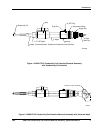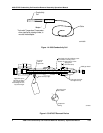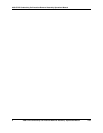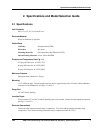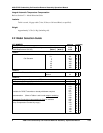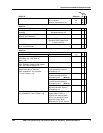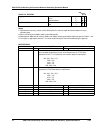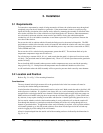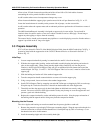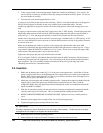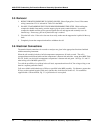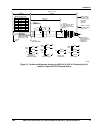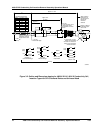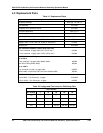
Installation
7/99 4909 CPVC Conductivity Cell Insertion/Removal Assembly– Operations Manual 11
3. Installation
3.1 Requirements
To insure that a representative sample is being measured at all times, the solution must move through and
completely purge out the cell channels or guard tube. If the measurement is made in a rapidly moving
liquid, the existing circulation of the solution can be utilized by mounting the assembly as described in the
next section so that the flow of the solution forces liquid through the cell. However, when measurements
are to be made in quiescent solutions, means must be provided for forcing the solution through the
conductivity cell so no air bubbles accumulate or care taken to place the cell in a position to measure the
true value of the solution.
Do not use the cells in solutions which will attack the fittings used or the wetted cell materials. The PES
and platinum or nickel of the electrode are the cell materials with which the solution will come into contact.
The wetted materials of the removal device with which the process may come into contact with are CPVC,
Teflon, EPDM and Viton.
Do not use the cell in a solution having temperatures greater than 80
°
C. The maximum limit set by the
temperature compensator range must be observed.
For cells having a constant of 0.01, 0.1 or 1, make certain that the guard is in place and is not loose on the
cell body. The guard tube must be hand-tightened only. There is a 1/16 inch space between the guard tube
and the cell body.
Do not install the 4909 Assembly where pressures and/or temperatures may occur outside the operating
range given in Fig. 1-1. Both pressure and temperature must be within the shaded area of the curve.
Avoid installations where the 4909 Assembly will be exposed to pressure shock caused by water hammer.
3.2 Location and Position
Refer to Fig. 3-1 or Fig. 3-2 for mounting dimensions.
Considerations
The cross-channel in the high constant cells or the guard tube holes in the low constant cells must be
covered by the solution during measurements.
Vertical insertion (from above) or horizontal insertion can be used. Make certain the tank or pipeline is full
under all process conditions. If a pipeline is not always full, use a vertical mounting and insert the cell far
enough into the vertical pipe that the cross-channel is below the horizontal exit pipe which may empty out.
Make certain an air bubble in the pipe does not prevent the cell from filling properly. (If the cell becomes
dry after use, it may require cleaning in accordance with Section 4.1 before again being placed in service.)
For best results, whether vertical or horizontal mounting is used, position the cell so that the sample will
flow through the channels or guard tube towards the mounting end of the cell, exiting through the cross-
channel or guard-tube holes. In applications where vertical mounting is required, avoid a position with the
cell channels pointed up, as this will permit solution to flow down into the open end of the cell and may
result in clogging by solids settling in the cell channels.
Allow for insertion depth from the outside wall of the mounting surface as indicated by the dimensions in
Fig. 3-1 or 3-2.



